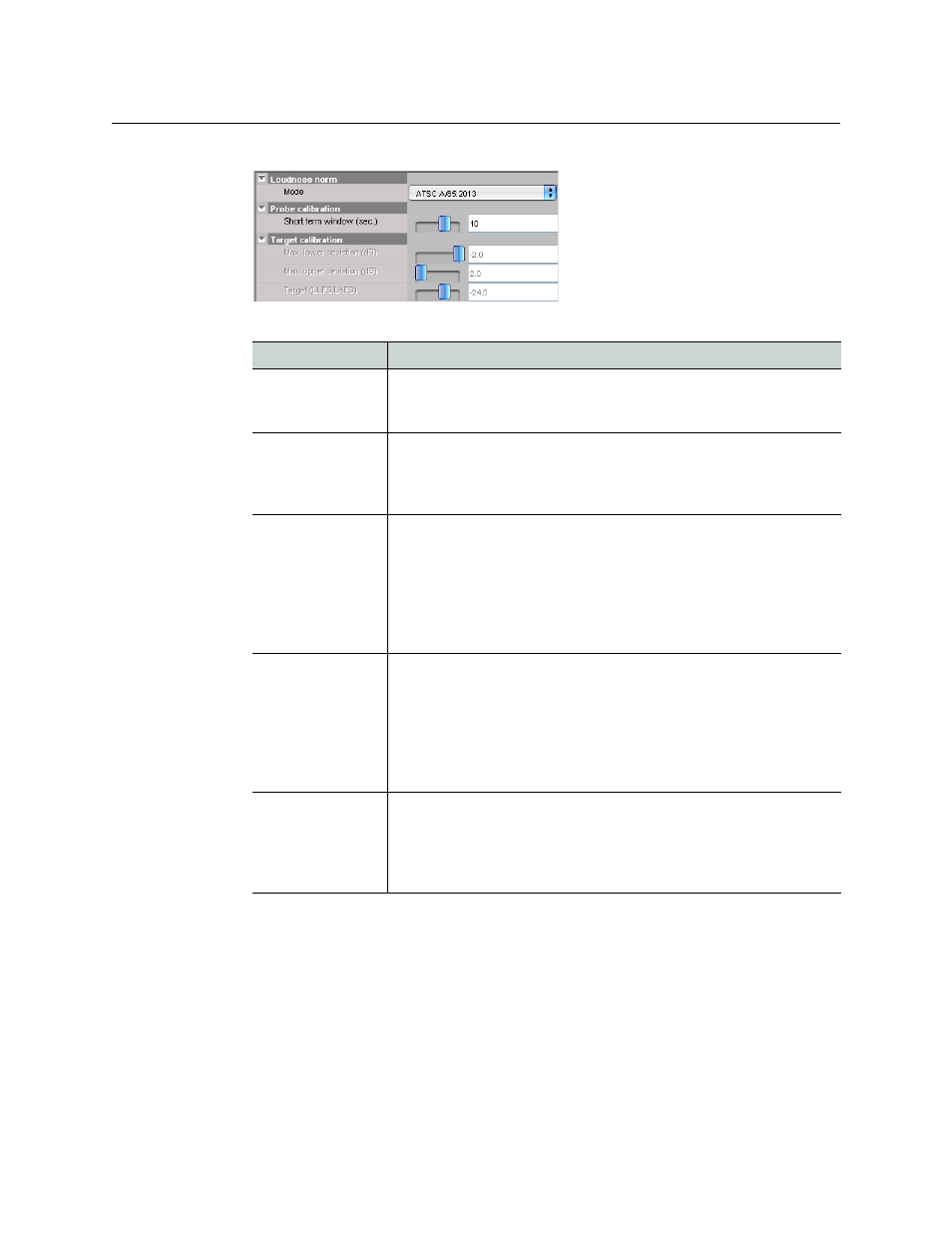Navigating to the loudness calibration in a, Kaleido-ip calibration profile – Grass Valley Kaleido-X v.7.80 User Manual
Page 147

139
Kaleido-X
User’s Manual
2 In the Properties pane, set the appropriate values for your installation.
The following values are involved:
Navigating to the loudness calibration in a Kaleido-IP calibration profile
To navigate to the loudness calibration in a Kaleido-IP calibration profile
1 In XEdit’s main window, click the System tab, and then click Calibrations (Kaleido-IP)
on the second-level tab bar.
Parameter
Description
Mode
Select the loudness standard you wish to apply: EBU R128,
ATSC A/85, or ARID TR-B32. Alternatively, you can define a custom
mode to gain more control.
Short term window This parameter determines the integration time of the short term
loudness measurement. It is configurable when using ATSC A/85 or a
custom measurement mode, with a value on a scale ranging
between 1 and 15 seconds.
Max. lower
deviation
The Max. lower deviation parameter determines the tolerated
excursion range of the short term loudness below the target value.
The measured short term loudness and the encoded dialnorm can be
compared against each other and against a standard or your
organization's target value, and alarms will be triggered in case of too
much deviation. In custom mode, possible values range from -70 dB
to 0 dB.
1
1.Setting this parameter to its lowest value (-70 dB) will prevent the short term/Target alarm from
being triggered when silence is detected.
Max. upper
deviation
The Max. upper deviation parameter determines the tolerated
excursion range of the short term loudness above the target value.
The measured short term loudness and the encoded dialnorm can be
compared against each other and against a standard or your
organization’s target value, and alarms will be triggered in case of too
much deviation. In custom mode, the possible values range from 0 dB
to 15 dB.
Target
Type the appropriate loudness value for your custom standard, in the
box, or set it using the slider. The default value is -24, on a scale of
-70 LUFS/LKFS to 0 LUFS/LKFS.
2
This value can then be compared
against the measured loudness, and against the encoded dialnorm
found in the VANC audio metadata (SMPTE ST 2020-A).
2.On the monitor wall, loudness monitors using a custom measurement mode have their scale
labeled LU, or LUFS. There is no functional difference between the LU vs. LK, or LUFS vs. LKFS
scales.
